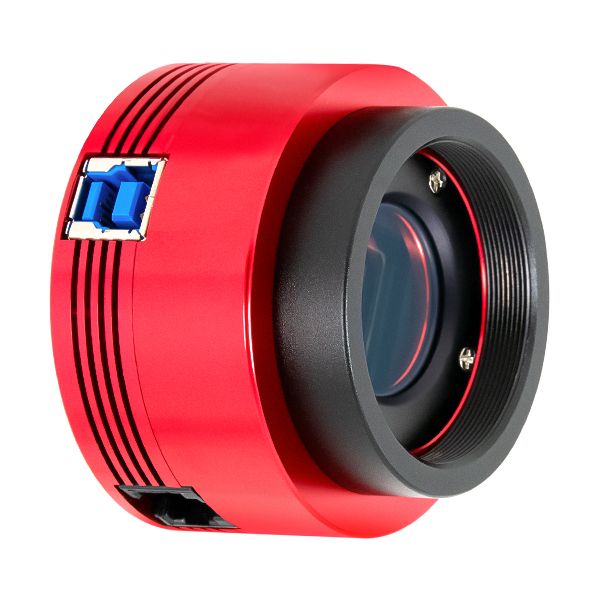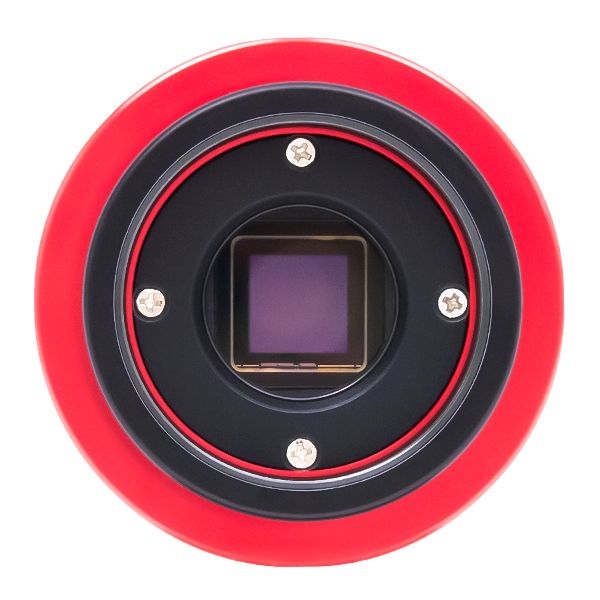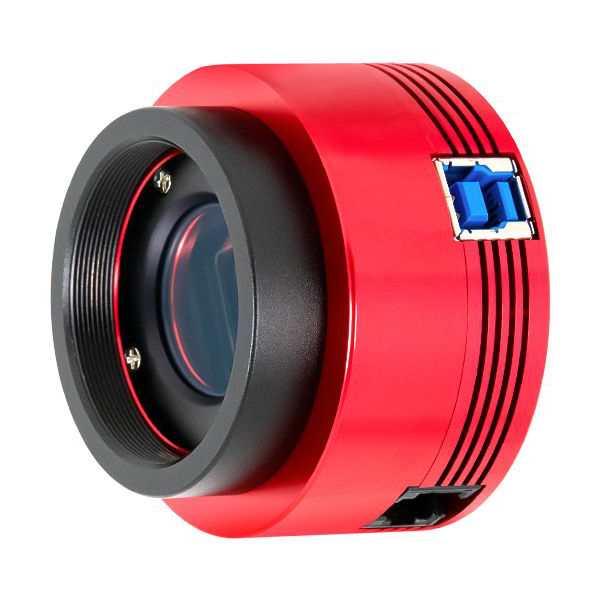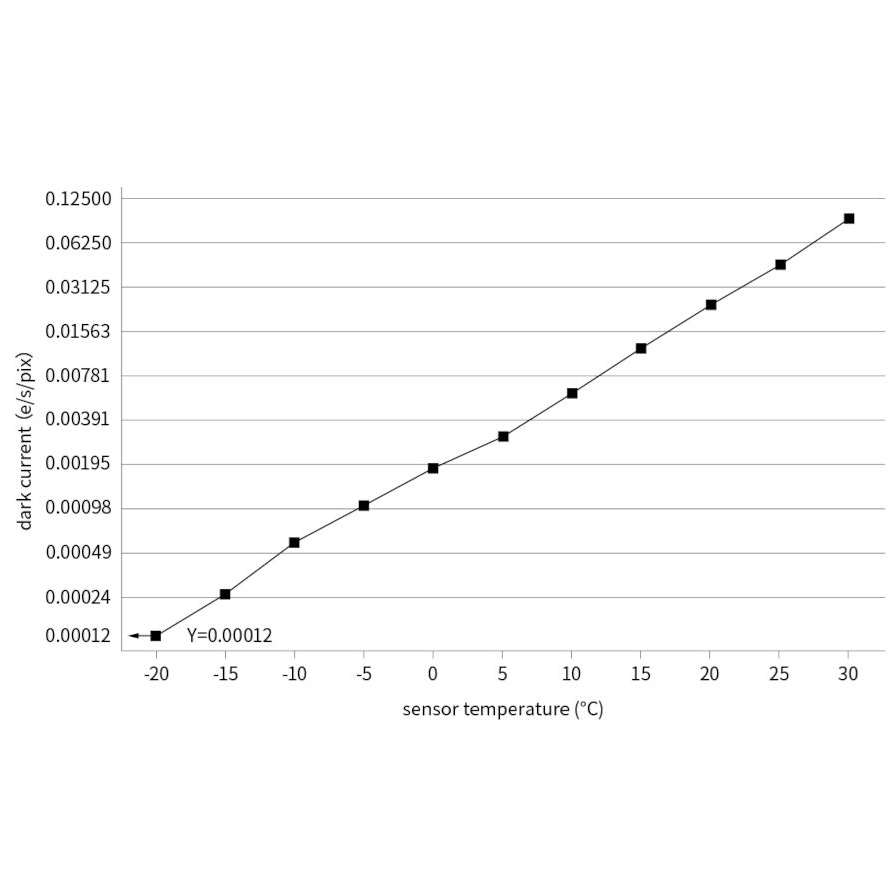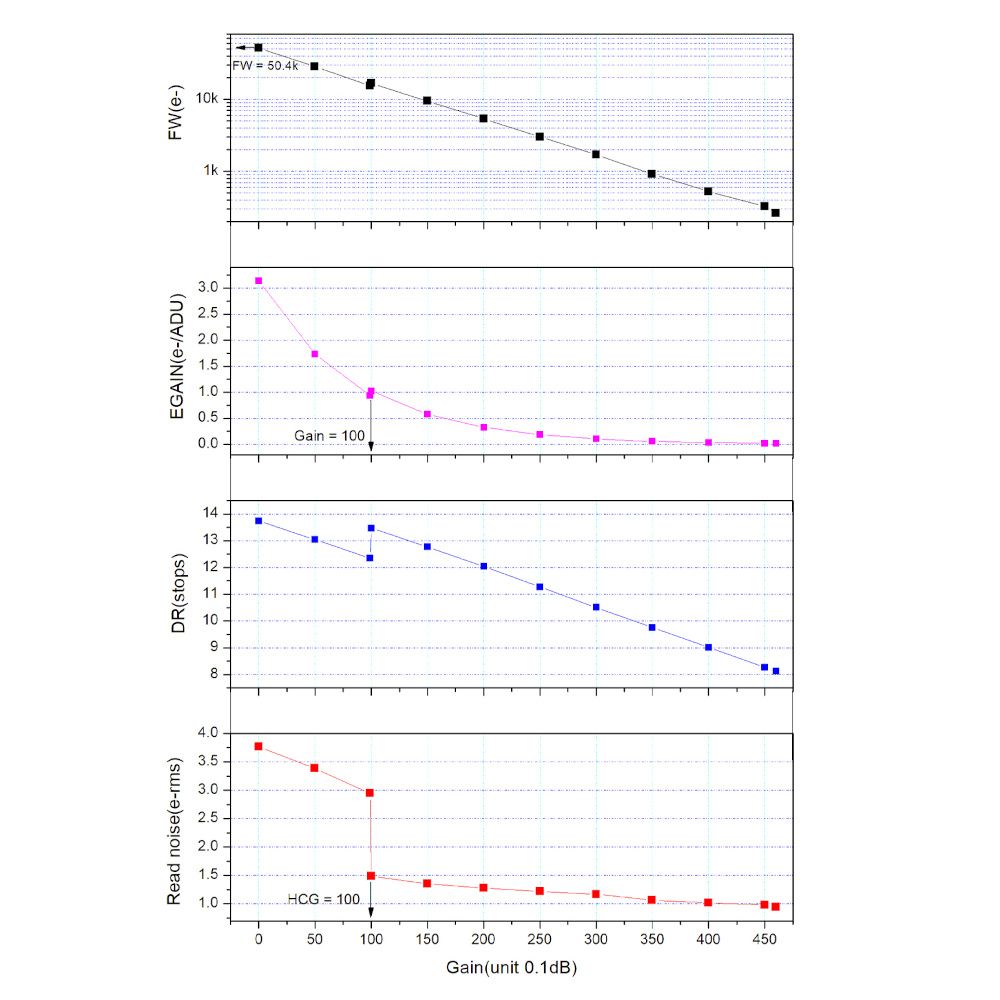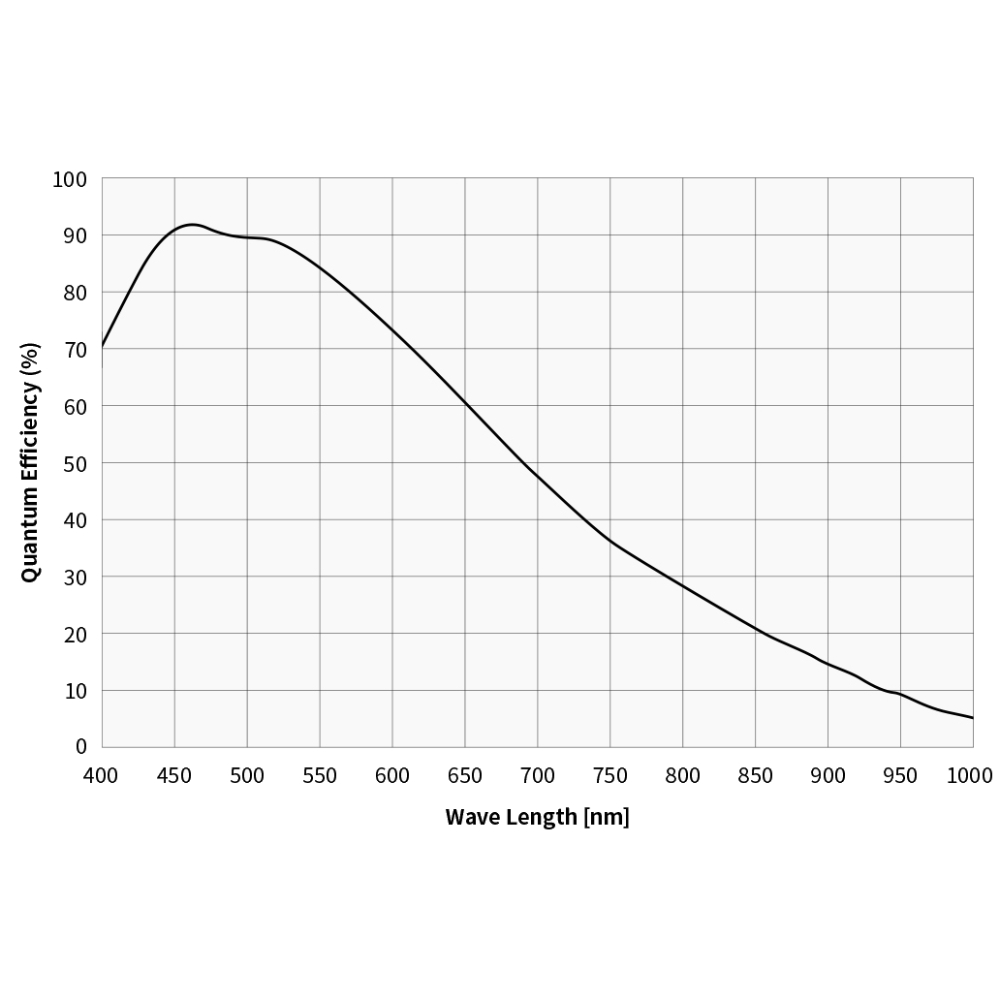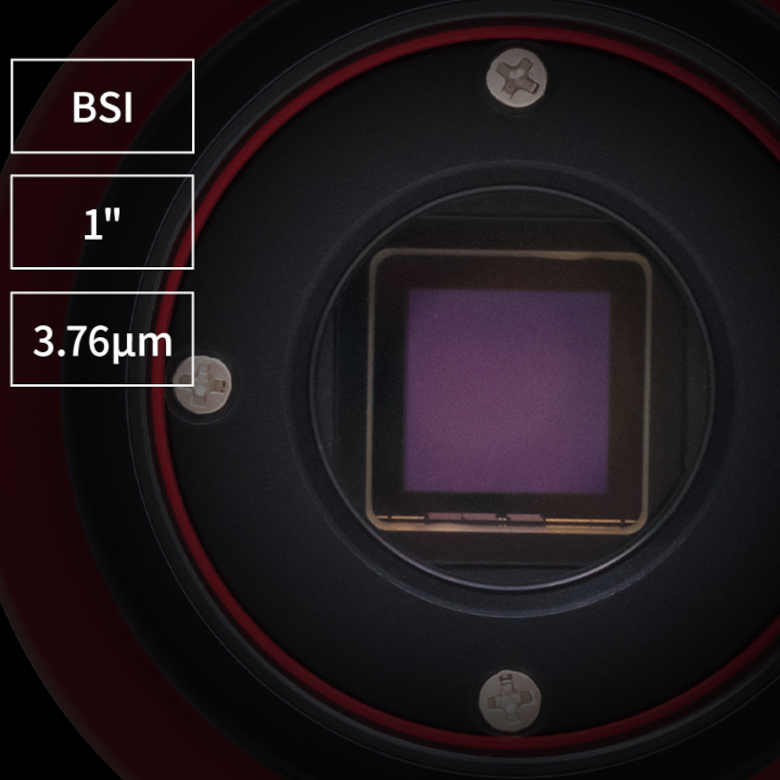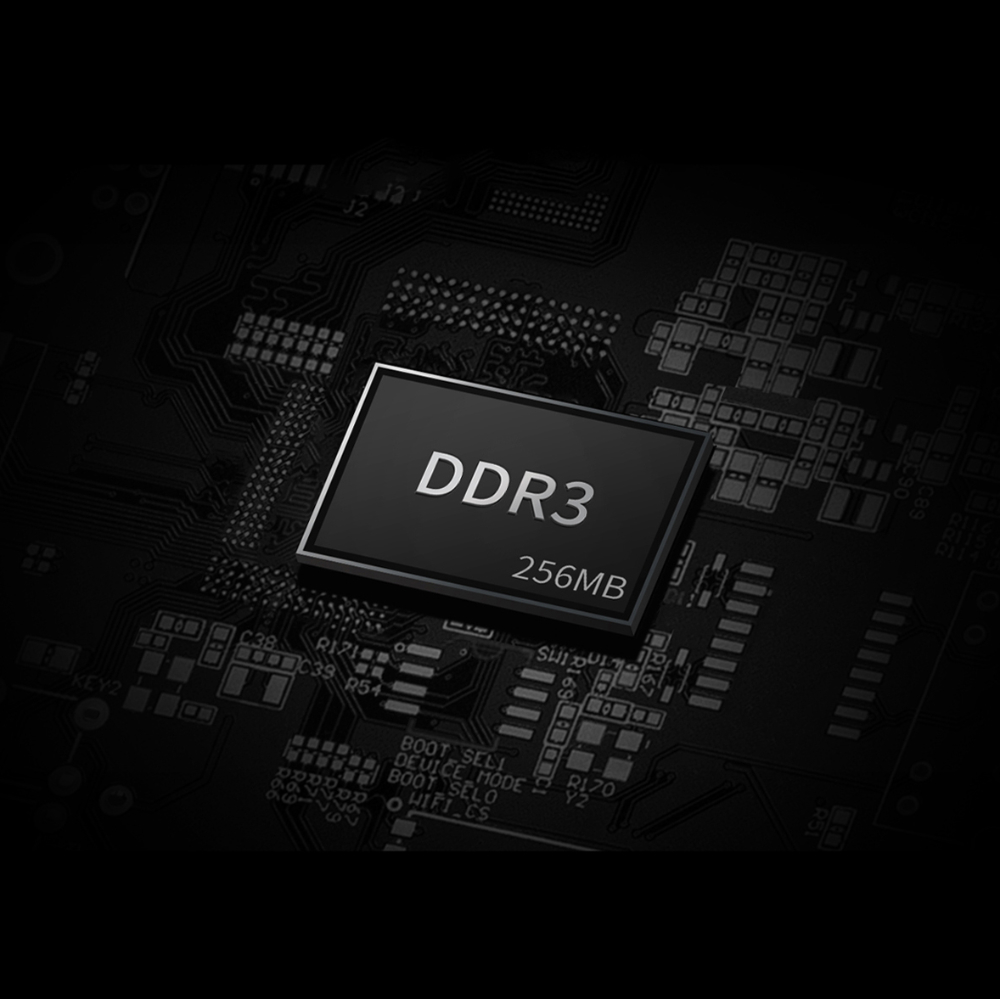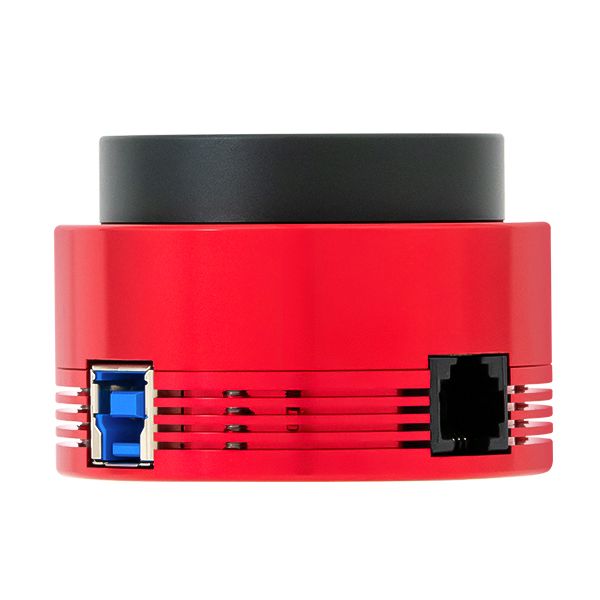ZWO ASI533MM USB 3.0 Monochrome CMOS Astronomy Camera
A Highly Sensitive Monochrome Planetary Camera from ZWO!
This ASI533MM delivers extraordinary performance for imaging the Moon, the planets, and even small deep space objects. Its quality aspects include a remarkable quantum efficiency, low readout noise, and large resolution. See why this ASI533 is highly regarded within the astrophotography community!
Noting the Sony IMX533 sensor, this monochrome camera captures incredible detail with its back illuminated sensor design. The impressive peak QE of 91%, large full well capacity of 50Ke, and 3.76um pixel size results in exceptional signal collection. Additions built into the camera body itself further enhance your astrophotography experience! Enjoy imaging our solar system or deep sky objects in the absence of amp glow and reduce buffer time with the included DDR3 memory cache. Safely transfer your data with the USB3.0 or utilize this camera’s high sensitivity for guiding with the ST4 port. With these advantageous features, the ASI533MM is a must have for any astrophotographer!
A High Performance, Professional Camera for Astrophotography
Let's Dig into the Data!
What sets one astrophotography camera apart from another? How is performance measured? Camera and sensor manufacturers provide certain interconnected specifications that give insight into the performance of a camera. These measurements include quantum efficiency, read noise, full well depth, gain, dark current, and dynamic range. While the graphs provided by the manufacturer may be confusing or intimidating, don't fret! Our team has put together a breakdown of these complicated topics to help you make sense of them. Take a look at the article here: Understanding ZWO Camera Charts and Graphs, and feel more confident making the right choice for your astrophotography needs!
Sony IMX533 CMOS Sensor
Typical front illuminated cameras have wiring and transistors that block portions of light from entering the pixel wells. Thanks to Sony’s STARVIS technology, the back illuminated design of the onboard Sony IMX533 sensor puts the wires behind the pixels, greatly increasing the camera’s sensitivity! This 1” square sensor has a pixel size of 3.76um and resolution of 3008x3008, making this a 9.04MP planetary camera. Its full well depth of 50Ke paired with the 14bit ADC contributes the high dynamic range, allowing for elevated contrast and detail. The small readout noise of 1.0e and high peak QE of 91% provides an excellent signal to noise ratio.
Electronic Highlights
In typical CMOS sensors, light produced from the camera itself is able to leak within the frames captured. In order to combat this, careful circuitry within the ASI533MM eliminates this amp glow all together, no matter the gain setting or how long the exposure is! Integrated within the camera body is the 256MB DDR3 memory cache. The addition of 256MB of internal memory allows for high speed imaging with reduced buffer time, greatly increasing data transfer efficiency.
USB 3.0 and ST4 Guide Port
During high speed imaging, its important to have a reliable system in place to transfer your data safely and securely. The onboard USB3.0 port does just this! The 5Gb bandwidth allows the ASI533MM to run at 20 FPS in full, 9MP resolution. Not only does this camera excel at solar, lunar, planetary, and DSO astrophotography, but it can also be used as a highly capable guide camera as well. Connect your camera directly to your computer with the USB3.0 port, or utilize the ST4 port to assist in tracking accuracy!
Astronomy Hub: Your one-stop-shop for Astrophotography Knowledge!
Our Gear Experts have compiled a wealth of information to help expand your astrophotography knowledge! Below you’ll find links to articles, videos and "how-to" guides. Just one more reason that our Astronomy Hub is a one-stop-shop for all your astronomy and astrophotography needs!
| Choosing the Best Planetary Camera |
| Autoguiding |
| Imaging the Planets |
| ZWO ASIAir Ultimate Guide |

